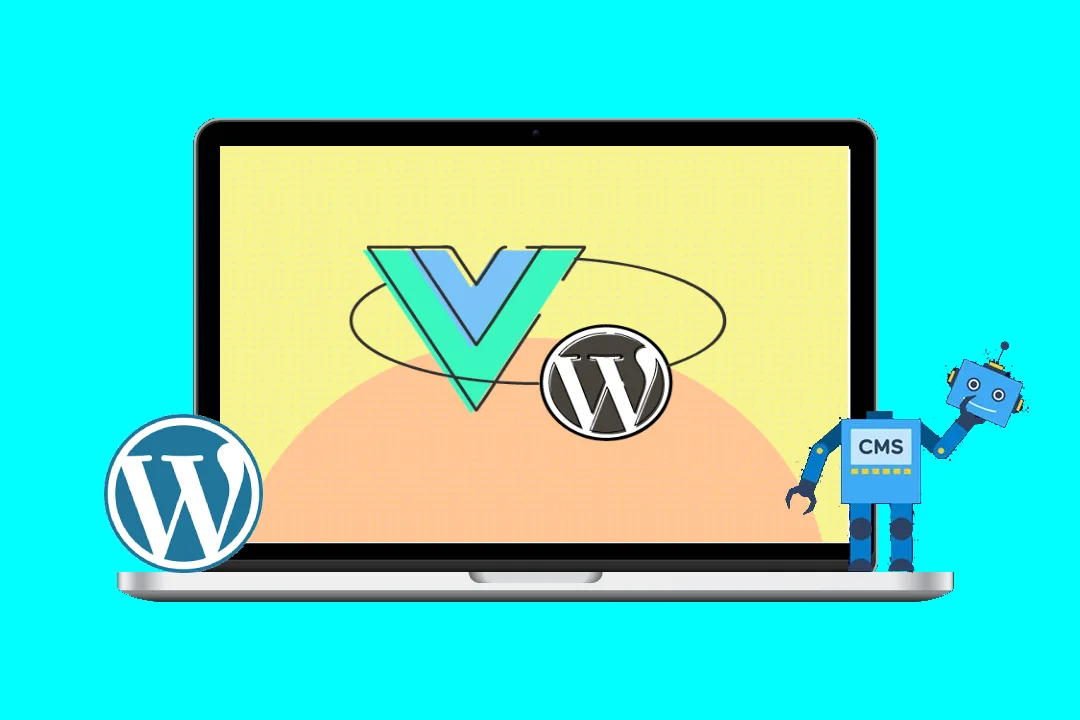WordPress Site Interactivity Enhanced with Vue.js: A Comprehensive Guide
WordPress, while a powerful CMS, can sometimes feel limited in terms of dynamic, front-end interactivity. This is where JavaScript frameworks like Vue.js shine. Vue.js, known for its progressive nature and ease of integration, allows you to add sophisticated interactive elements to your WordPress site without the complexity of larger frameworks like React or Angular. This blog post will guide you through integrating Vue.js into your WordPress theme, covering everything from setup to advanced techniques.
Why Choose Vue.js for WordPress?
- Progressive Adoption: You can start small and gradually integrate Vue.js into specific parts of your site without a complete rewrite.
- Easy Learning Curve: Vue.js has a gentle learning curve, making it accessible even to developers with limited JavaScript experience.
- Lightweight and Fast: Vue.js is remarkably lightweight, resulting in faster page load times.
- Excellent Documentation and Community Support: Vue.js boasts comprehensive documentation and a vibrant community, ensuring ample resources for troubleshooting and learning.
- Component-Based Architecture: Vue.js encourages a component-based architecture, promoting code reusability and maintainability.
Step-by-Step Integration:
1. Enqueueing Vue.js in Your WordPress Theme:
The first step is to include Vue.js in your WordPress theme. You can either include it via a CDN or download the library and include it locally. For this example, we’ll use a CDN for simplicity:
<?php
function enqueue_vue_scripts() {
wp_enqueue_script( 'vue', 'https://cdn.jsdelivr.net/npm/[email protected]/dist/vue.js', array(), '2.6.14', true );
}
add_action( 'wp_enqueue_scripts', 'enqueue_vue_scripts' );
?>This code snippet adds the Vue.js library to your theme’s footer. Remember to replace '2.6.14' with the desired Vue.js version if needed. Adding it to the footer ensures it doesn’t block rendering of the page content.
2. Creating a Simple Vue.js Component:
Let’s create a simple component that displays a counter:
<div id="counter-app">
<p>Count: {{ count }}</p>
<button v-on:click="increment">Increment</button>
</div>
<script>
new Vue({
el: '#counter-app',
data: {
count: 0
},
methods: {
increment: function () {
this.count++
}
}
})
</script>This code creates a div with the id counter-app. The {{ count }} within the <p> tag is a Vue.js interpolation, which dynamically displays the value of the count data property. The button uses v-on:click directive to call the increment method, which increases the count by 1.
3. Integrating the Vue.js Component into your WordPress Theme:
Create a new .php file (e.g., vue-counter.php) within your theme’s directory and place the following code:
<?php
/**
* Template for Vue.js counter component.
*/
?>
<div id="counter-app">
<p>Count: {{ count }}</p>
<button v-on:click="increment">Increment</button>
</div>
<script>
new Vue({
el: '#counter-app',
data: {
count: 0
},
methods: {
increment: function () {
this.count++
}
}
})
</script>Now, include this file in your theme’s template file (e.g., index.php, page.php, or a custom template) using include:
<?php include( get_template_directory() . '/vue-counter.php' ); ?>This will render the Vue.js component on your page.
4. Using Vue.js Components with WordPress Data:
Let’s enhance this by fetching data from WordPress using AJAX. Assume you have a custom post type called "products" with a title and description. We’ll create a Vue component to display them:
<div id="product-list">
<ul>
<li v-for="product in products" :key="product.id">
<h3>{{ product.title.rendered }}</h3>
<p>{{ product.excerpt.rendered }}</p>
</li>
</ul>
</div>
<script>
new Vue({
el: '#product-list',
data: {
products: []
},
mounted() {
fetch( '<?php echo esc_url( admin_url( 'admin-ajax.php' ) ); ?>', {
method: 'POST',
headers: {
'Content-Type': 'application/x-www-form-urlencoded',
},
body: 'action=get_products'
})
.then(response => response.json())
.then(data => this.products = data);
}
})
</script>5. Creating the WordPress AJAX Handler:
Now we need to create the AJAX handler in your functions.php file:
<?php
add_action( 'wp_ajax_get_products', 'get_products_callback' );
add_action( 'wp_ajax_nopriv_get_products', 'get_products_callback' ); //For non-logged-in users
function get_products_callback() {
$args = array(
'post_type' => 'product',
'posts_per_page' => -1, //Get all products
);
$products = get_posts( $args );
$products_array = array_map( function( $product ) {
return array(
'id' => $product->ID,
'title' => get_post_meta( $product->ID, '_product_title', true ), // Adjust meta key if different
'excerpt' => get_post_meta( $product->ID, '_product_excerpt', true ), // Adjust meta key if different
);
}, $products );
wp_send_json( $products_array );
wp_die();
}
?>
This code fetches all products and sends them as JSON to the Vue component. Remember to adjust the meta keys (_product_title, _product_excerpt) if your custom post type uses different meta keys.
6. Using a Build Process (Webpack or Parcel):
For larger projects, a build process is highly recommended. Webpack and Parcel are popular choices. They allow for features like:
- Module Management: Organize your code into reusable modules.
- Bundling: Combine your JavaScript files into optimized bundles.
- Minification: Reduce the size of your JavaScript code.
- Source Maps: Facilitate debugging.
Integrating these tools requires a more advanced setup, but significantly improves development workflow and performance for complex applications.
7. Security Considerations:
- Sanitize Data: Always sanitize data received from WordPress or user inputs before displaying it in your Vue components. Use WordPress’s built-in functions like
esc_html()andesc_attr(). - Input Validation: Validate user inputs on the client-side using Vue.js and on the server-side using WordPress functions.
- Nonce Verification: When using AJAX, always include a nonce to prevent unauthorized requests.
This detailed guide provides a foundation for integrating Vue.js into your WordPress site. Remember to tailor the code to your specific theme and requirements. By leveraging the power of Vue.js, you can dramatically enhance the interactivity and user experience of your WordPress website, creating more engaging and dynamic content. Starting with simpler components and gradually adding complexity allows for a smooth transition and easier debugging. Always remember security best practices to ensure the safety and integrity of your website.
